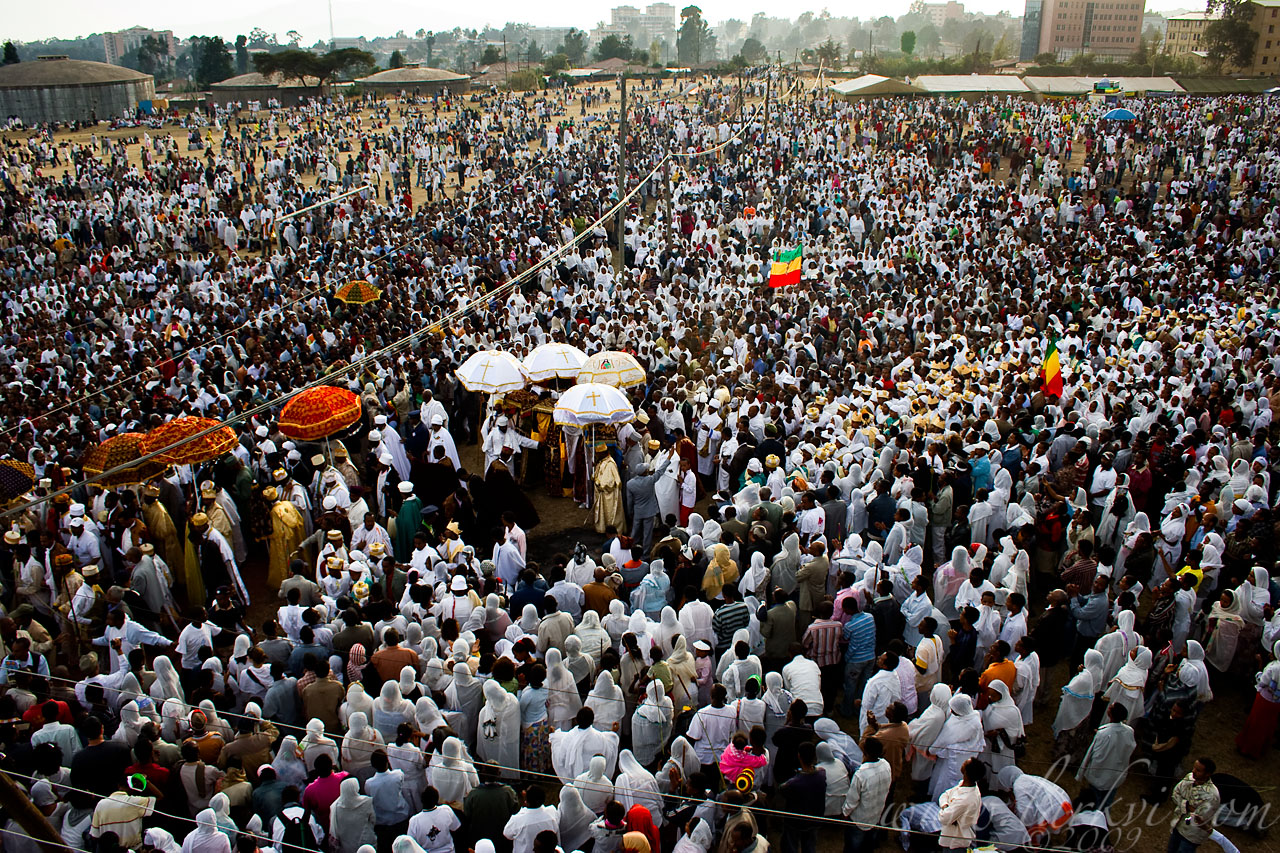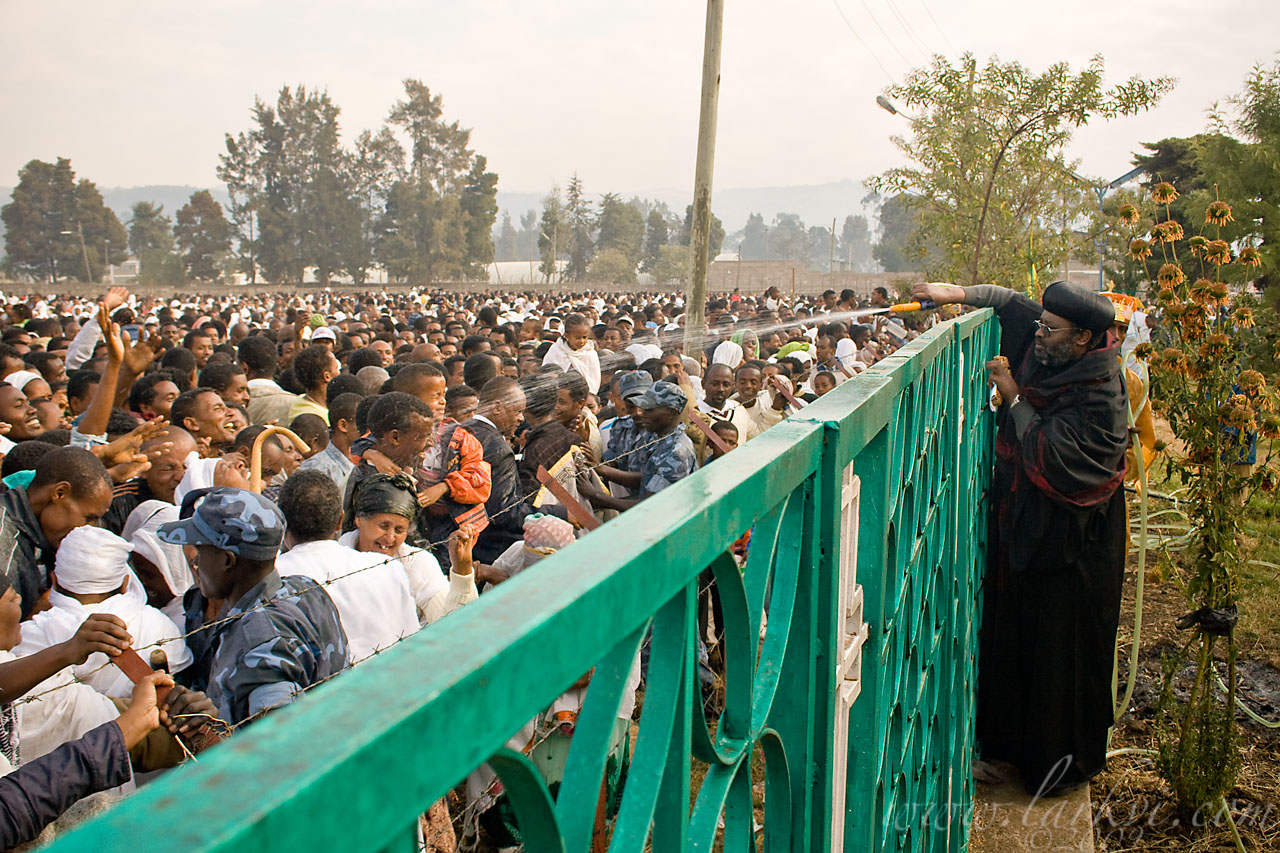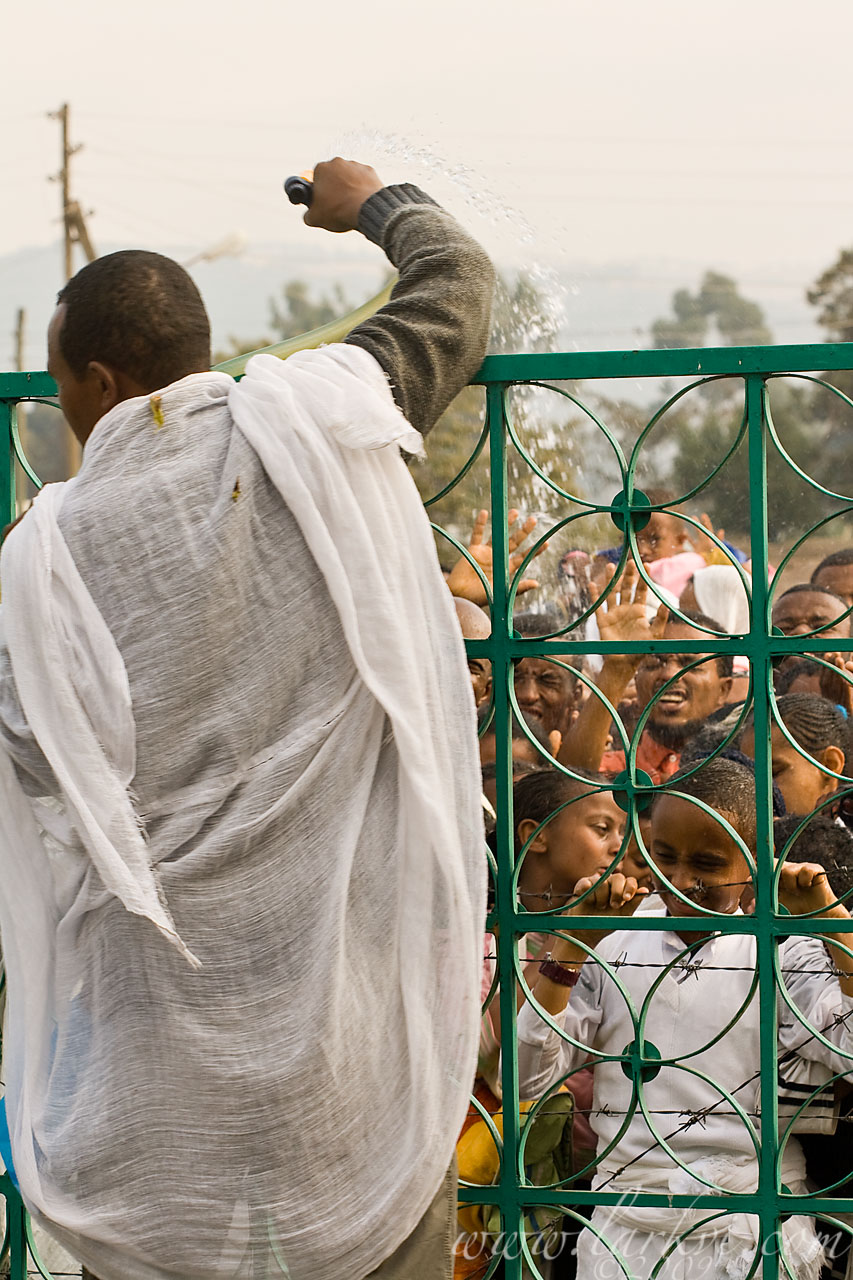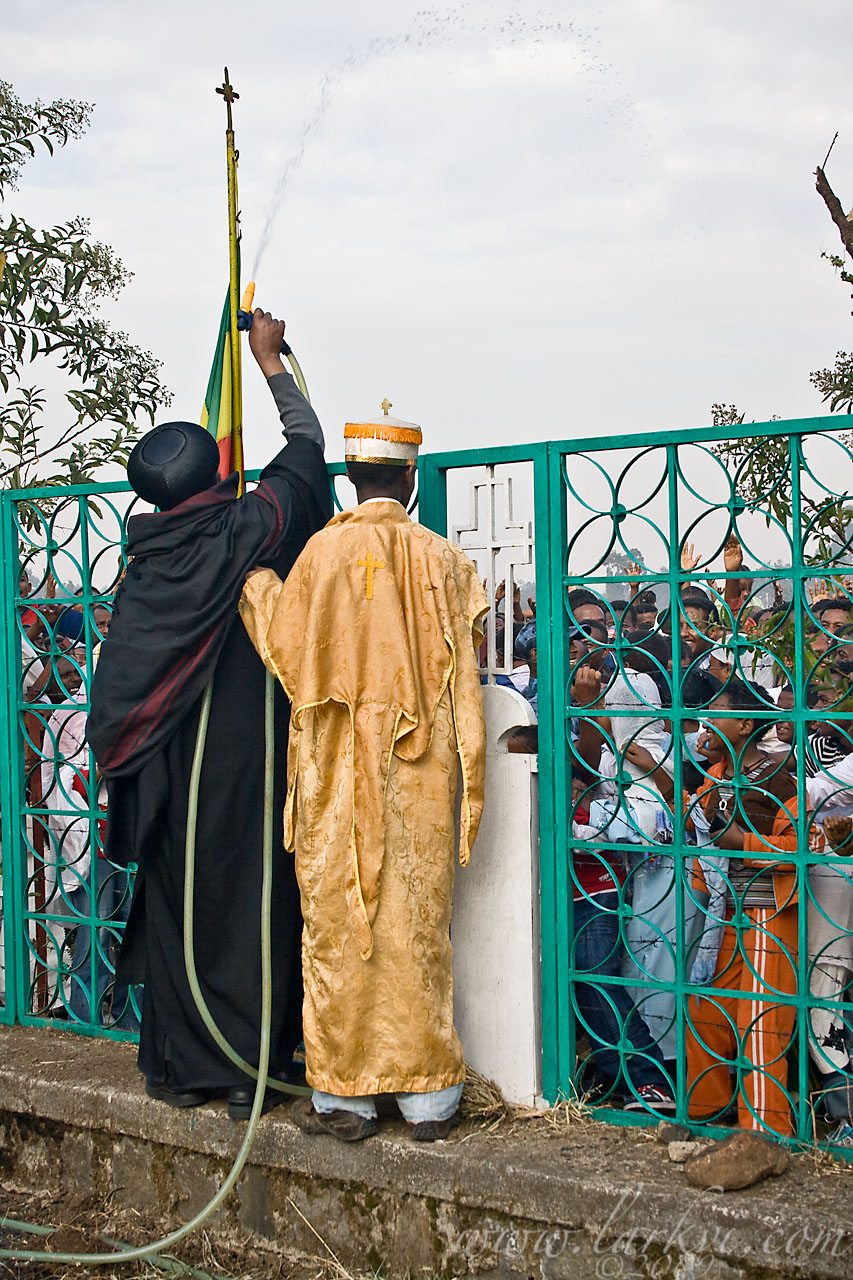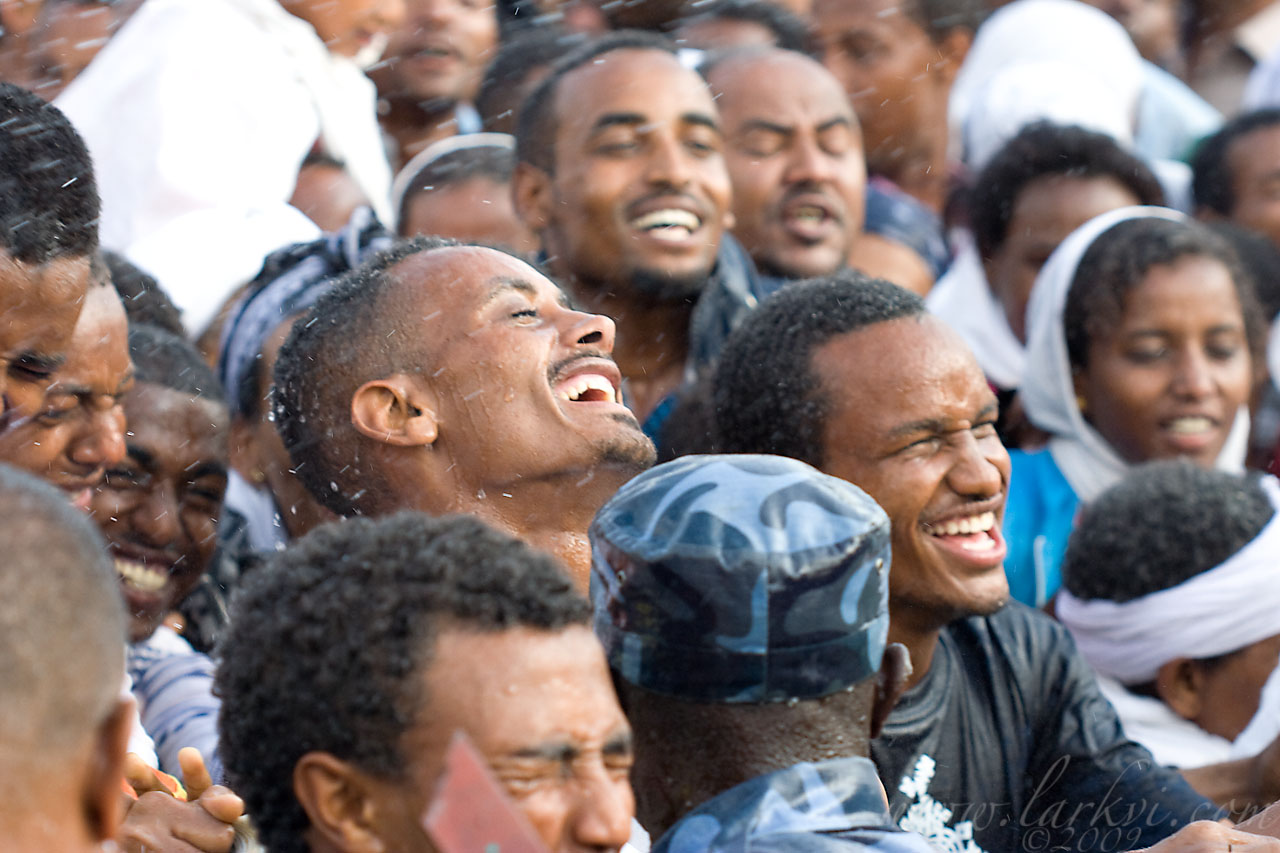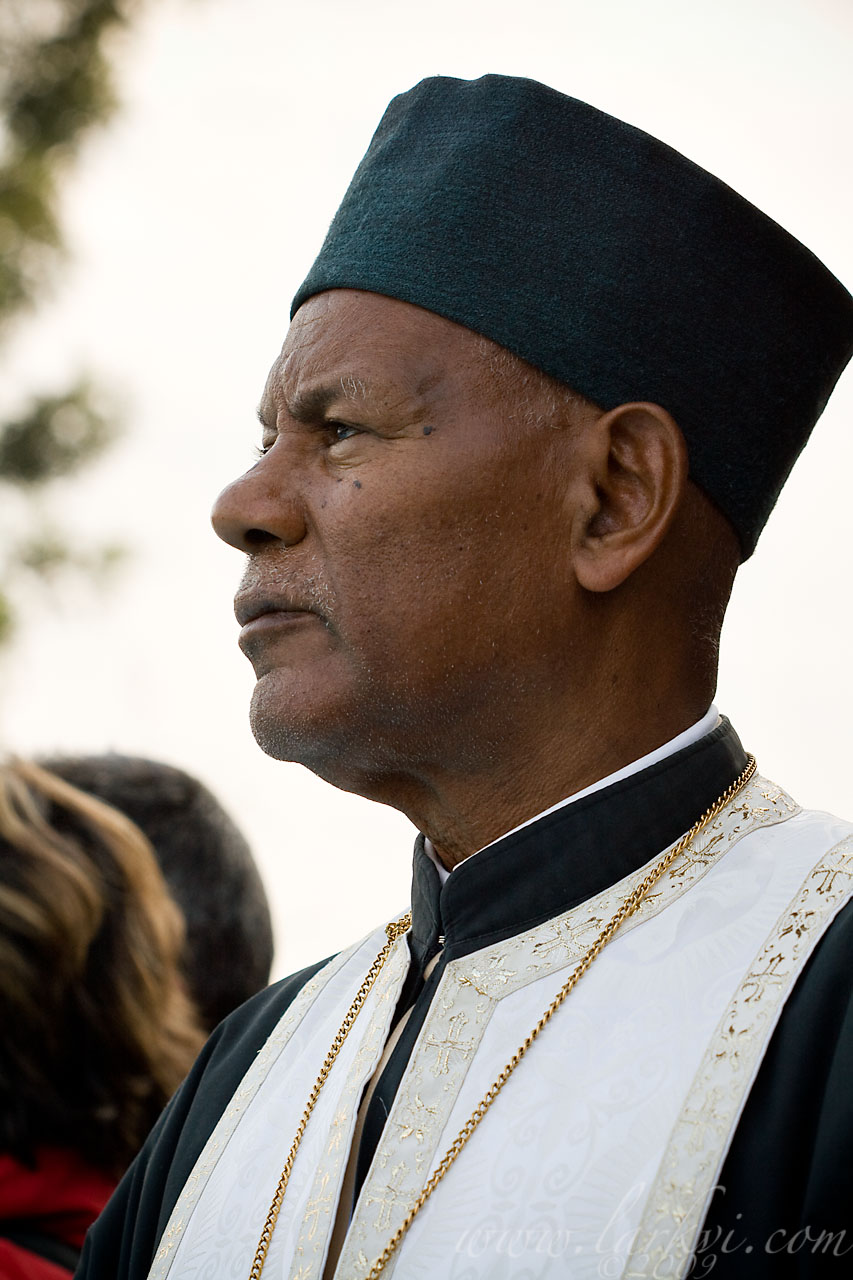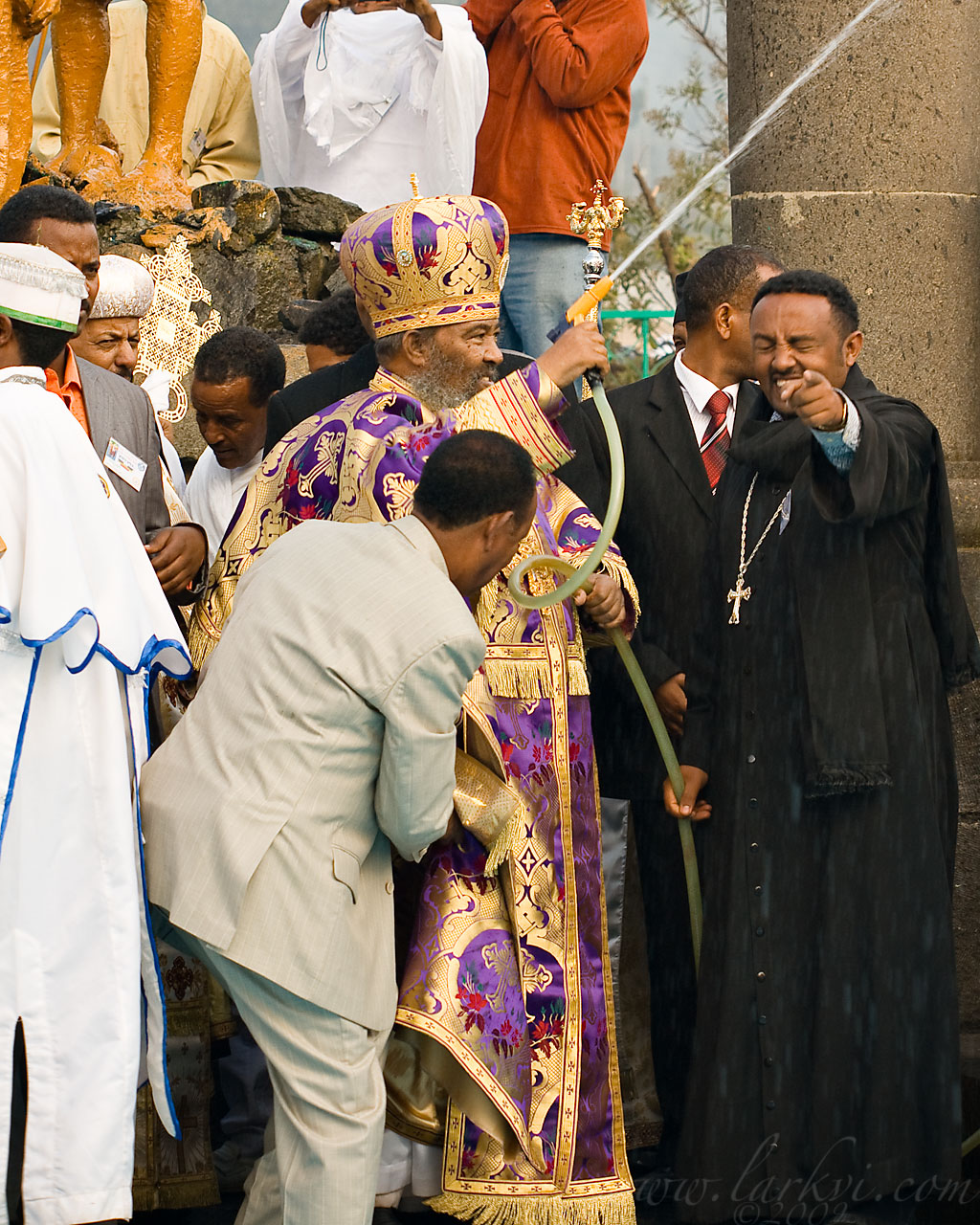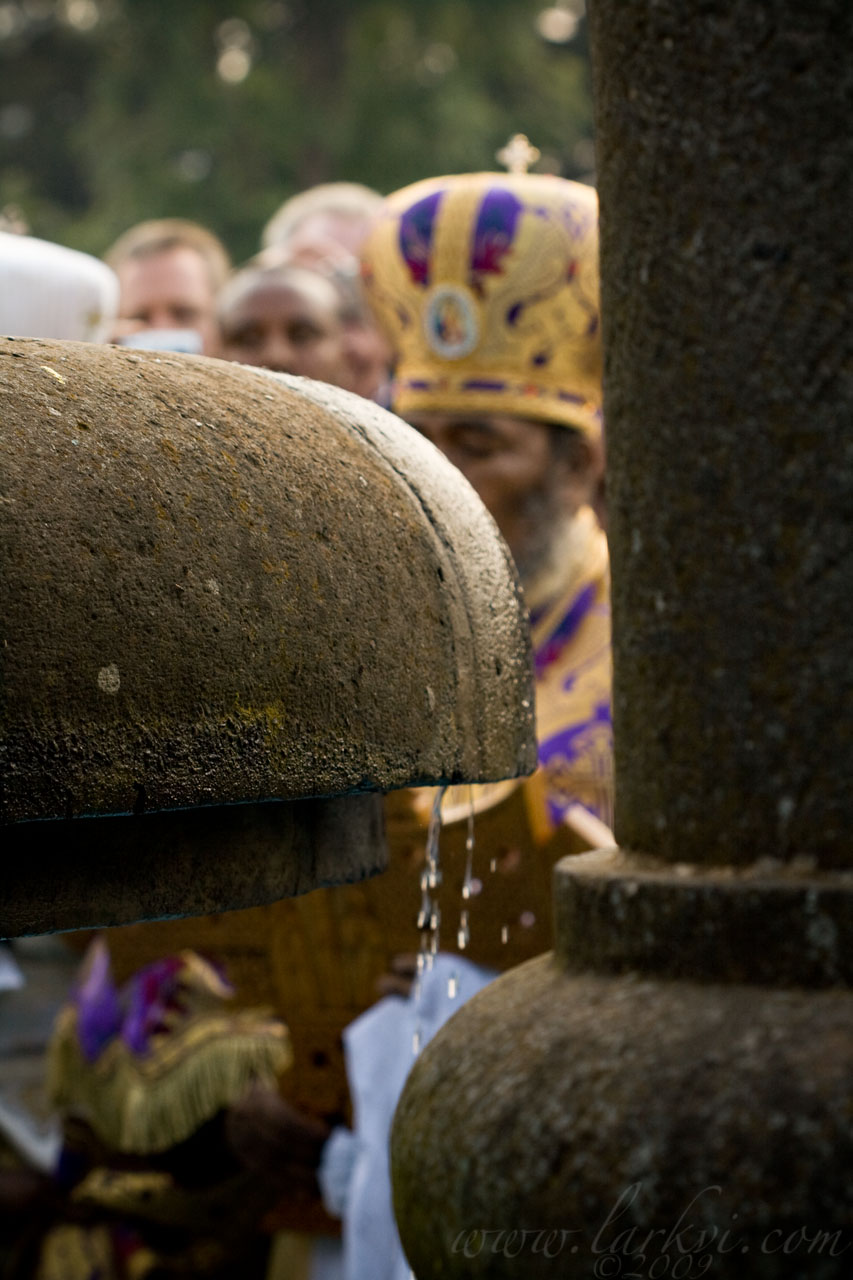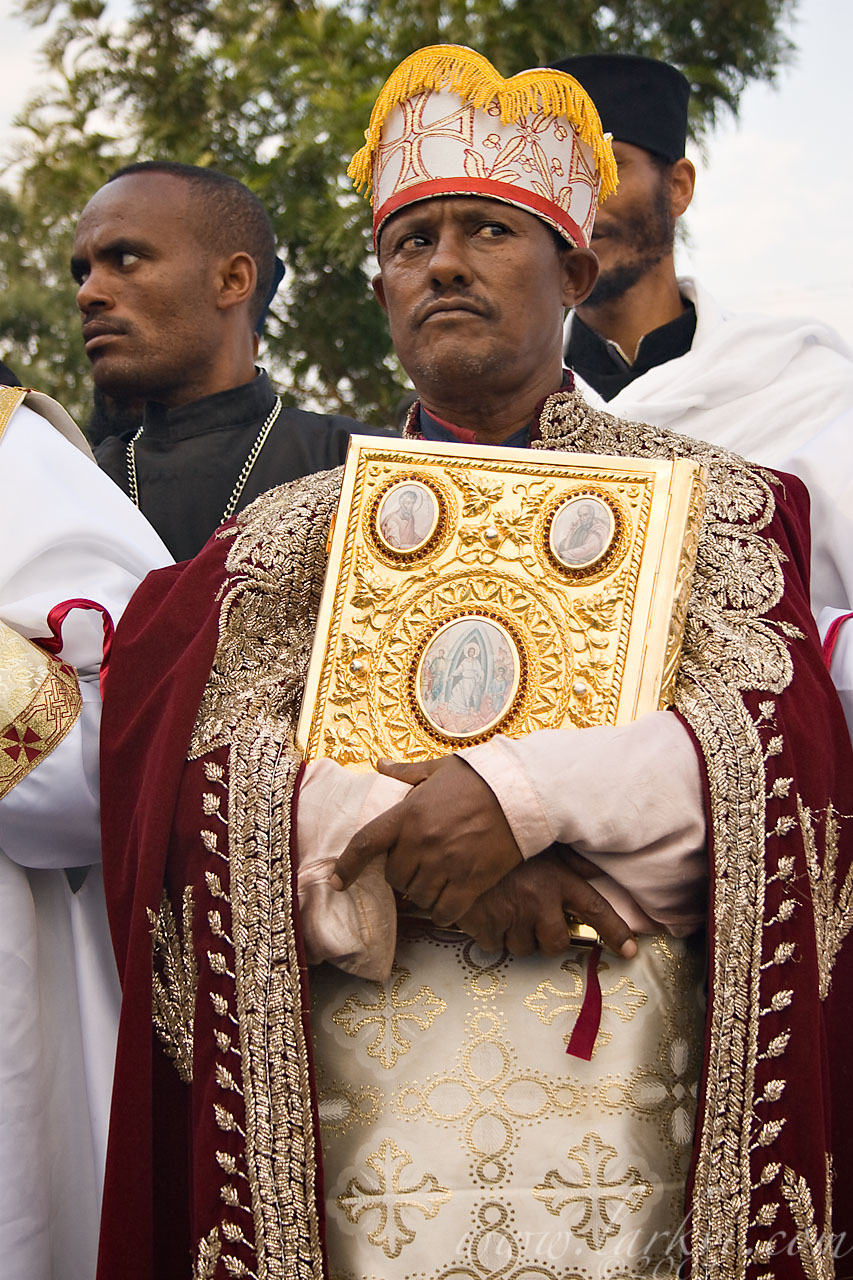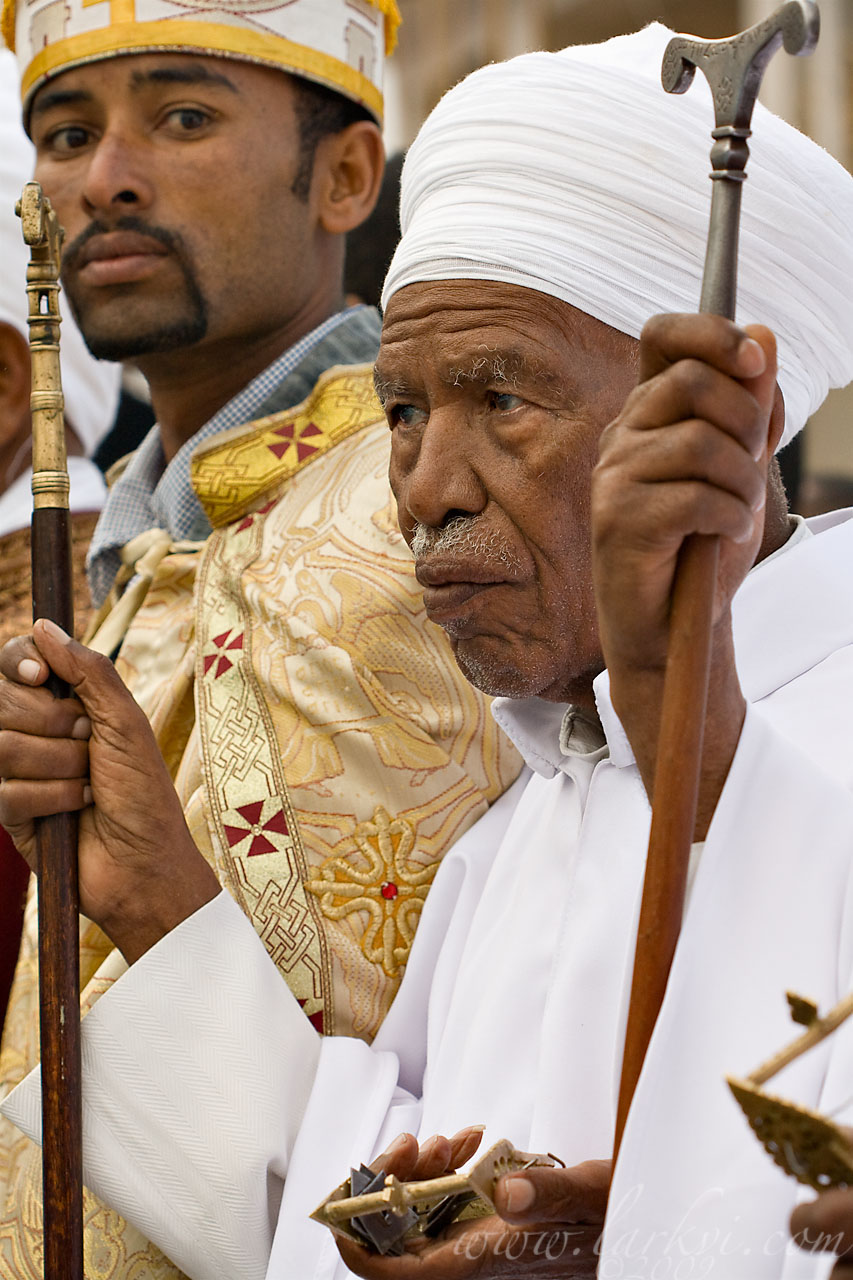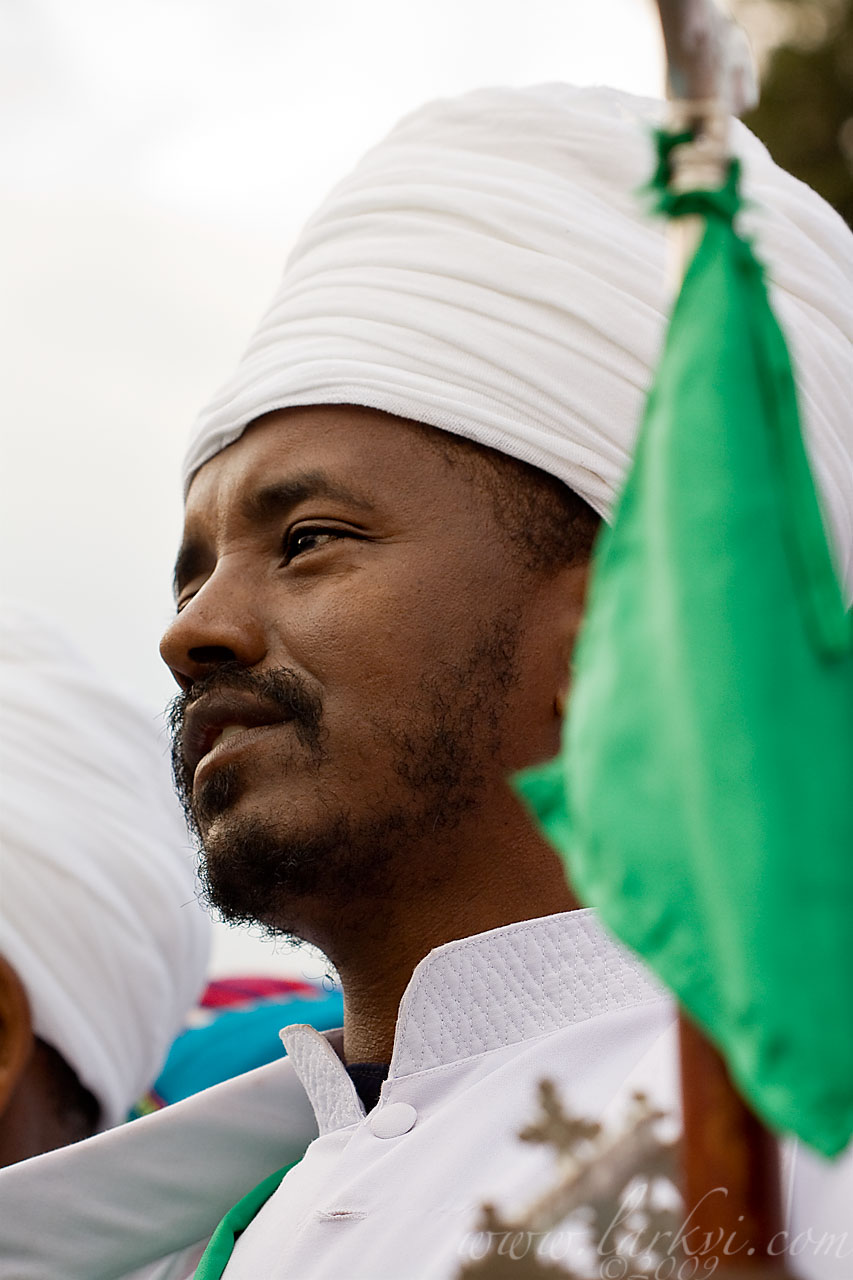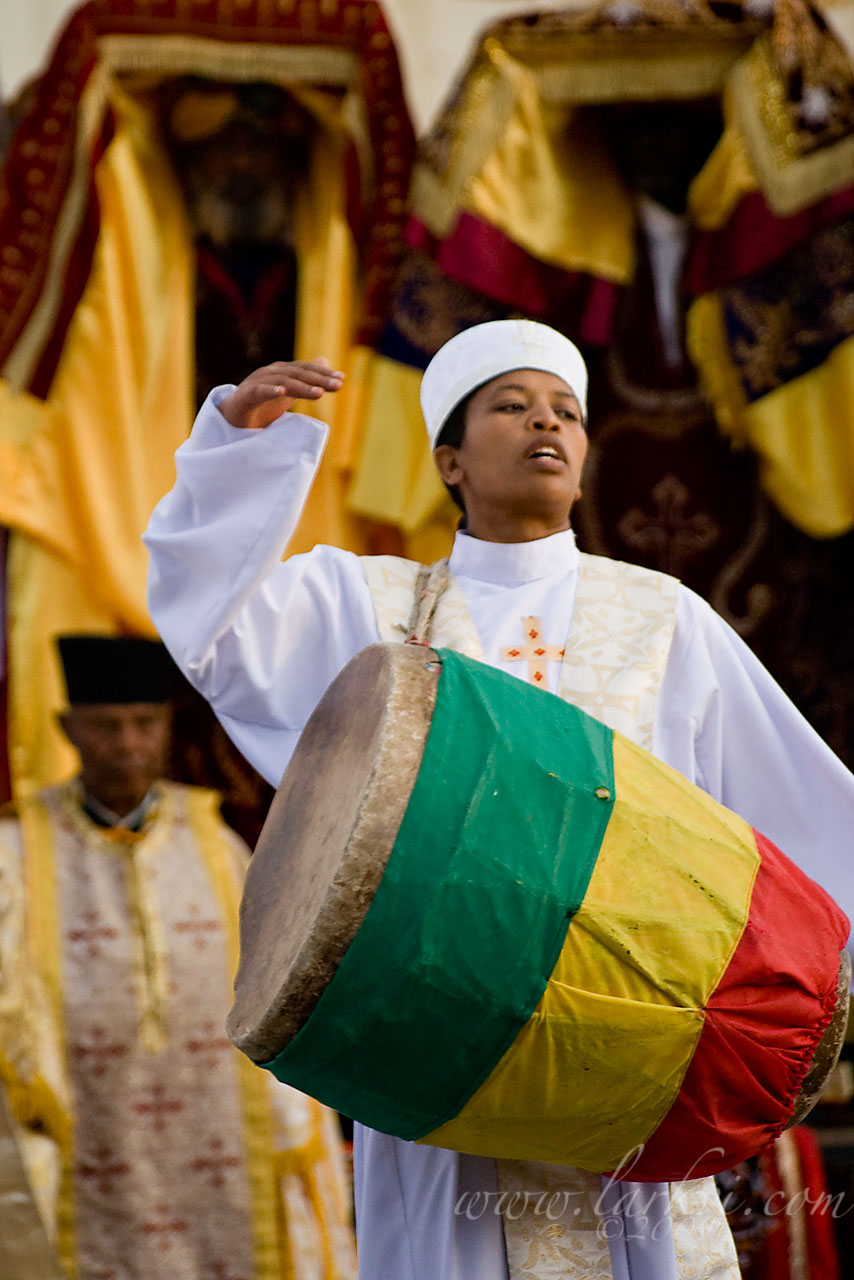Looking out at the crowd in one direction. Though this is likely the largest, as it is the one the Patriarch attends, it is only one of more than twenty celebrations throughout Addis Ababa. The group with the umbrellas accompanies the tabot from several churches, joining the celebration.
Incidentally, the condominium in the upper-right is where I live–you can see my balcony in the photo.

